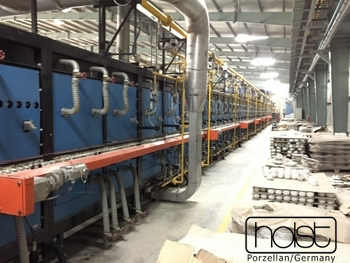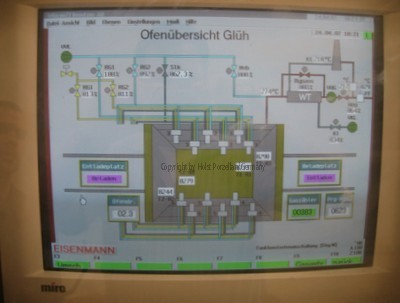Tunnel kiln
Tunnel kiln
Basically, in addition to various drying chambers and drying methods, two types of porcelain kilns are available for porcelain production, which achieve glost firing above 1,320 °C.
- Block Kiln
- Tunnel Kiln
Today, both types are gas-powered in modern plants and equipped with heat recovery systems. The porcelain firing with coal is almost extinct and gives way to modern kilns. The following kiln types are used for glost firing.
The use of tunnel or block kiln is essentially determined by the intended production quantities, which in turn are determined by the production capacities of the different production methods (rolling/jiggering/casting/pressing/isostatic pressing). As a rule of thumb, the larger a factory or the higher the production volume of similar articles of different body shapes, the more profitable is the use of a tunnel kiln.

In the Asian porcelain industry, however, the tunnel kiln has a nickname that describes its disadvantages in one word: the hungry dragon. A tunnel kiln cannot simply be switched on or off as required and must be fired permanently. This necessity places a high cost or production pressure on the factory to put in new porcelain for hard firing every day and every hour.

While the different thermal phases in a block kiln can be timed and adjusted very individually, the tunnel kiln has to be divided into thermal sections and fired. Depending on the manufacturer of the tunnel kiln, considerable tolerances can occur here, which ultimately also have a great influence on the quality of the porcelain.
